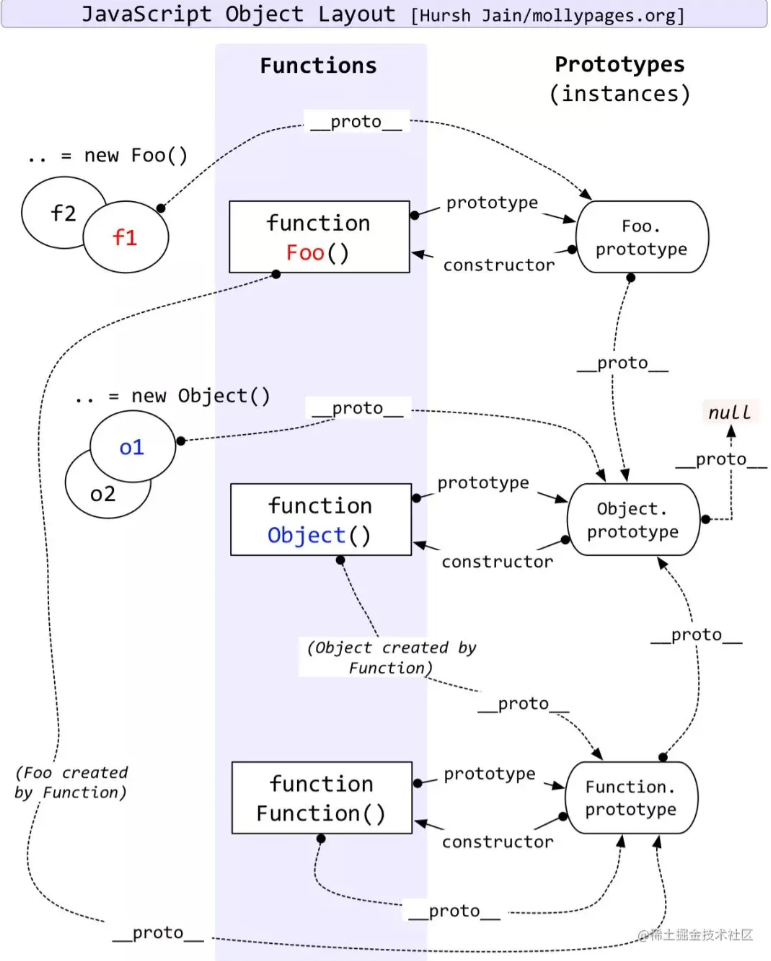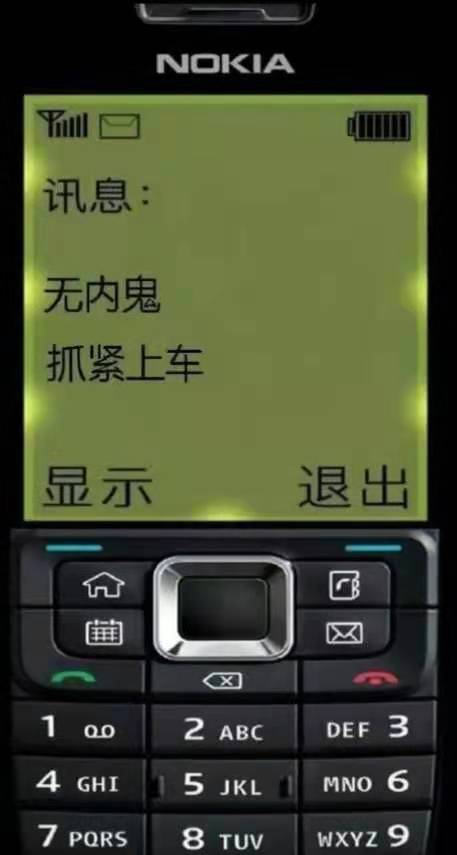這裡給大家分享我在網上總結出來的一些知識,希望對大家有所幫助 原型和原型鏈 1. 原型 每個JS對象一定對應一個原型對象,並從原型對象繼承屬性和方法 1.1 __proto__ 對象的__proto__屬性值就是對象的原型對象 此屬性是過時的語法,現在建議使用Object.getPrototypeo ...
這裡給大家分享我在網上總結出來的一些知識,希望對大家有所幫助
原型和原型鏈
1. 原型
每個JS對象一定對應一個原型對象,並從原型對象繼承屬性和方法
1.1 __proto__
對象的__proto__屬性值就是對象的原型對象
此屬性是過時的語法,現在建議使用Object.getPrototypeof(obj)
函數也是對象,因此也有__proto__屬性
1.2 Prototype
函數的prototype屬性值就是函數的原型對象
定義:給其他對象提供共用屬性的對象,prototype 本身也是對象,只是被用以承擔某個職能
當說 prototype 對象時,實際上說的是 “xxx 函數對象的 prototype 對象”
1.3 constructor
每個原型都有一個 constructor 屬性指向關聯的構造函數
實例訪問 constructor 屬性是獲取的原型對象的構造函數
function Person(age) {
this.age = age;
}
let p = new Person(50);
console.log(Person.prototype.constructor === Person); // true
console.log(p.constructor === Person); // true 會查找原型對象
對於引用類型來說 constructor 屬性值是可以修改的,但是對於基本類型來說是只讀的,因為創建他們的是只讀的原生構造函數(native constructors)
2. 原型鏈
每個對象擁有一個原型對象,通過 __proto__ 指針指向上一個原型 ,並從中繼承方法和屬性,同時原型對象也可能擁有原型,這樣一層一層,最終指向 null。這種關係被稱為原型鏈 (prototype chain),通過原型鏈一個對象會擁有定義在其他對象中的屬性和方法。
因此,當讀取實例的屬性時,如果找不到,就會查找與對象關聯的原型中的屬性,如果還查不到,就去找原型的原型,一直找到最頂層為止。
2.1 原型鏈知識點
-
原型鏈的盡頭(root)是
Object.prototype。所有對象(除null)均從Object.prototype繼承屬性 -
Object.prototype.__proto__值是null,原型鏈終止 -
Function.prototype和Function.__proto__為同一對象意味著:
Object/Array/String等等構造函數本質上和Function一樣,均繼承於Function.prototype -
Function.prototype直接繼承root(Object.prototype) -
繼承的原型鏈:
Object.prototype(root)<---Function.prototype<---Function|Object|Array... -
對象的
__proto__指向自己構造函數的prototype -
ES規範定義對象字面量({})的原型就是
Object.prototype
2.2 Object和Function的雞和蛋的問題
Function.prototype是個不同於一般函數(對象)的函數(對象)Function.prototype像普通函數一樣可以調用,但總是返回undefined。- 普通函數實際上是
Function的實例,即普通函數繼承於Function.prototype。func.__proto__ === Function.prototype。 Function.prototype繼承於Object.prototype,並且沒有prototype這個屬性。func.prototype是普通對象,Function.prototype.prototype是null。- 總結,
Function.prototype其實是個另類的函數,可以獨立於/先於Function產生。
- Object本身是個(構造)函數,是Function的實例,即
Object.__proto__就是Function.prototype
問題總結:
先有Object.prototype(原型鏈頂端),Function.prototype繼承Object.prototype而產生,最後,Function和Object和其它構造函數繼承Function.prototype而產生
2.3 原型鏈圖解
原型和原型鏈經典關係圖

自己畫的原型圖
圖解描述:
Person、Object、Function是函數對象,具備prototype屬性,其他對象是只有__proro__
獲取原型對象
Person.__proto__及Object.__proto__與Function.__proto__相等,是ƒ () { [native code] }
Person.__proto__及Object.__proto__與Function.__proto__的原型對象為Object.prototype
Function.__proto__和Function.prototype值相等,為空函數: ƒ () { [native code] }
Person.constructor、Object.constructor與Function值相等,為: ƒ Function() { [native code] }

原型鏈代碼輸出結果
function Person(name) {
this.name = name
}
var p2 = new Person('king');
console.log(p2.__proto__) //Person.prototype
console.log(p2.__proto__.__proto__) //Object.prototype
console.log(p2.__proto__.__proto__.__proto__) // null
console.log(p2.__proto__.__proto__.__proto__.__proto__)
//null後面沒有了,報錯
console.log(p2.__proto__.__proto__.__proto__.__proto__.__proto__)
//null後面沒有了,報錯
console.log(p2.constructor)//Person
console.log(p2.prototype)//undefined p2是實例,沒有prototype屬性
console.log(Person.constructor)//Function 一個空函數
console.log(Person.prototype)
//列印出Person.prototype這個對象里所有的方法和屬性
console.log(Person.prototype.constructor)//Person
console.log(Person.prototype.__proto__)// Object.prototype
console.log(Person.__proto__) //Function.prototype
console.log(Function.prototype.__proto__)//Object.prototype
console.log(Function.__proto__)//Function.prototype
console.log(Object.__proto__)//Function.prototype
console.log(Object.prototype.__proto__)//null
console.log(Function); // ƒ Function() { [native code] } 空函數,名為Function
console.log(Object.constructor); // ƒ Function() { [native code] }
console.log(Person.constructor); // ƒ Function() { [native code] }
console.log(Function === Object.constructor); // true
console.log(Function === Person.constructor); // true
console.log(Function.__proto__); // ƒ () { [native code] }
console.log(Function.prototype); // ƒ () { [native code] }
console.log(Function.__proto__ == Function.prototype); // true
console.log(Function.__proto__.__proto__ === Object.prototype) // true
console.log(Function.prototype.__proto__ === Object.prototype) // true




